A noisy office environment can significantly impact productivity and employee well-being. According to a Remark Group survey, 52% of workers report being distracted by noise more than five times per day at work, with 17% reporting being distracted by noise more than ten times. Reducing noise levels in the workplace is essential for creating a comfortable, efficient work environment. This article explores various office design strategies to help mitigate noise pollution and enhance the overall office experience.

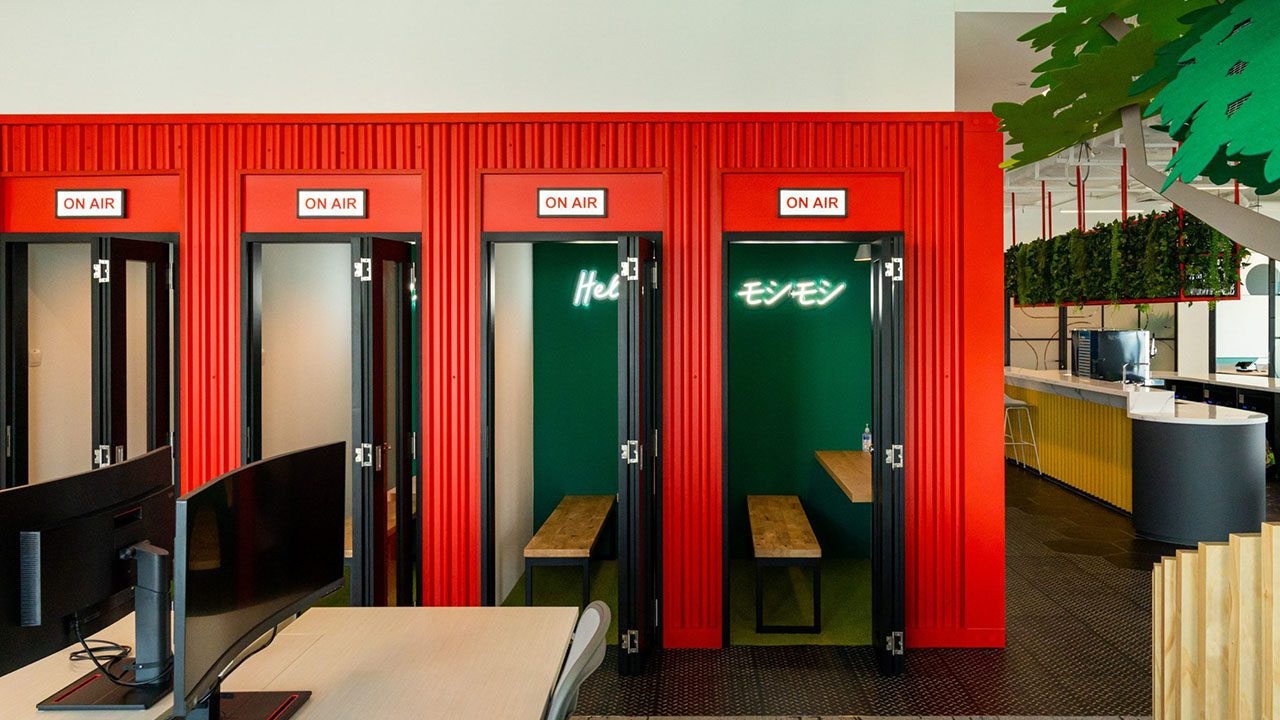
Measuring the Intensity of Sound
The dB (decibel) scale is used to measure the intensity or loudness of sound. The threshold of pain, which is the point at which sound becomes physically painful, is around 130 dB. A pneumatic drill typically generates around 120 dB. I’m sure many of us have been startled by a loud car horn – that’s around 110 dB at a distance of 1 metre. A music concert at a distance of 20 meters can reach 100 dB, while inside a tube carriage, the noise levels are around 90 dB.
Moving to the office, conversations typically occur at around 60 dB. In open-plan workspaces, noise levels can be high due to the lack of physical barriers between employees, resulting in a distracting and disruptive work environment. To address these issues, offices have increasingly implemented strategies to reduce noise levels, such as using sound-absorbing materials like carpets, curtains, and acoustic ceiling tiles. We look at this in more detail below.
| Examples | dB range | |
|---|---|---|
| Threshold of pain | 130 | |
| Pneumatic drill | 120 | |
| Loud car horn @ 1m | 110 | |
| Music concert @ 20m | 100 | |
| Inside a tube carriage | 90 | |
| Inside a bus | 80 | |
| Average curbside traffic | 70 | |
| Conversations | 60 | |
| Typical office | 50 | |
| Family living room | 40 | |
| Library | 30 | |
| Bedroom at night | 20 | |
| Broadcasting Studio | 10 | |
| Threshold of hearing | 0 |
Source: Baden-Powell, C. (2008). Architect’s Pocket Book (3rd ed.). Architectural Press
Acoustic Design Principles
Understanding the fundamental principles of acoustic design is crucial when aiming to reduce noise levels in an office environment. These principles include sound absorption, insulation, and diffusion, each playing a vital role in controlling noise within a space.
- Sound absorption: This principle involves using materials that absorb sound waves, preventing them from reflecting off surfaces and creating echoes. Implementing sound-absorbing materials such as acoustic panels, baffles, or ceiling clouds can help reduce reverberation and improve overall acoustic quality in the office.
- Sound insulation: Insulation prevents sound from passing through walls, ceilings, and floors, effectively reducing noise transfer between rooms or from external sources. To achieve effective sound insulation, consider using high-quality insulation materials and constructing partition walls with appropriate mass and density.
- Sound diffusion: Diffusion involves scattering sound waves in various directions, reducing the impact of direct sound paths and enhancing acoustic comfort. Incorporating elements such as curved walls, irregular surfaces, or diffusers can help create a more balanced sound environment by evenly distributing sound energy throughout the space.
In addition to these principles, office layout considerations are essential in reducing noise levels. For instance, strategically arranging desks and workstations can minimise direct sound paths. It is also beneficial to group noisy equipment or functions in designated areas away from workspaces, limiting potential disruptions. By incorporating these acoustic design principles into your office planning, you can create a more comfortable and productive environment for employees.
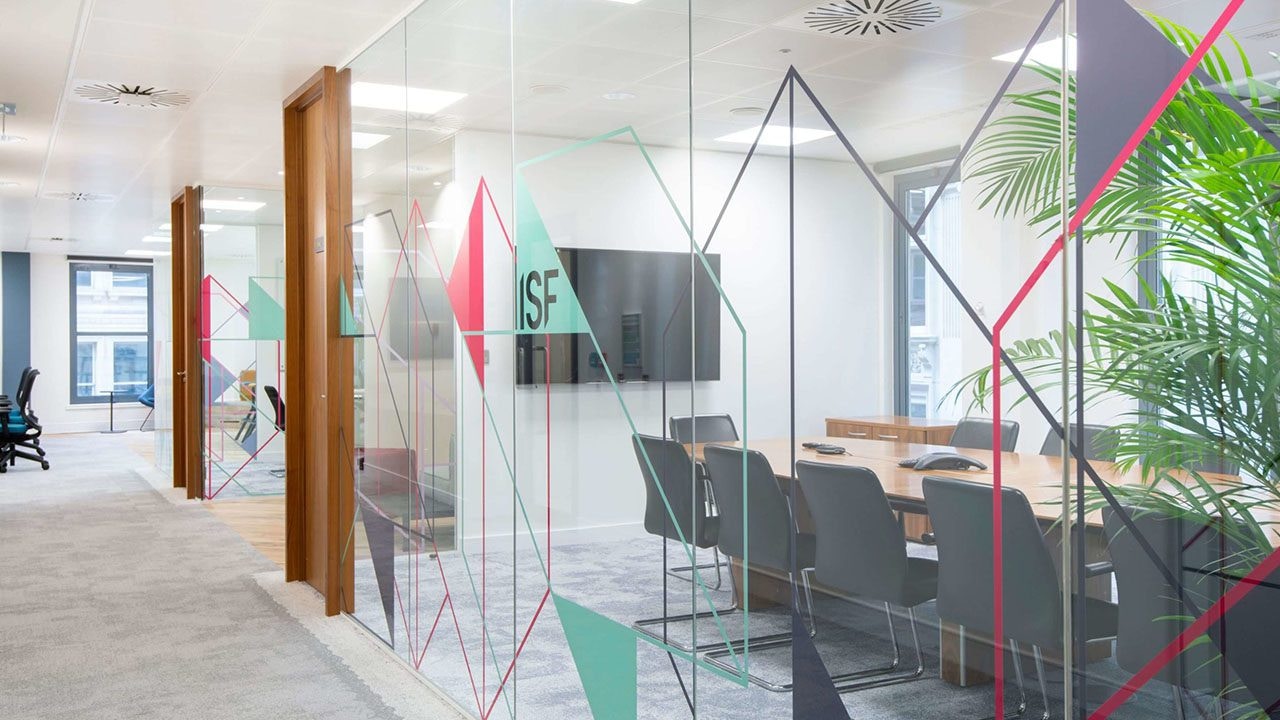
Selecting Noise-Reducing Materials
Choosing the right noise-reducing materials for your office environment is crucial in effectively managing sound levels. Here are some essential materials to consider when designing your office for optimal acoustics:
Insulation materials
High-quality insulation materials for walls, ceilings, and floors are critical in preventing sound transmission between rooms or from external sources. Mineral wool, fibreglass, and acoustic foam are popular options known for their sound-absorbing properties.
Acoustic panels
Acoustic panels are designed to absorb sound and reduce reverberation in large spaces. Available in various sizes, shapes, and materials, these panels can be installed on walls, ceilings, or even as freestanding dividers. Fabric-wrapped panels, perforated wood panels, and foam panels are common choices for office environments.
Acoustic baffles
Similar to panels, baffles absorb sound but are typically suspended from the ceiling. They can be particularly effective in open-plan offices or spaces with high ceilings where wall-mounted panels may not suffice.
Soundproof doors and windows
Upgrading to double or triple-glazed windows and installing solid-core doors with appropriate seals can significantly reduce sound leakage between rooms and from the outside.
Sound-absorbing flooring
Carpets, modular carpet tiles, and acoustic underlay can help absorb sound and reduce impact noise from foot traffic.
By incorporating these noise-reducing materials into your office design, you can create a quieter, more focused work environment for your employees, ultimately enhancing productivity and well-being.
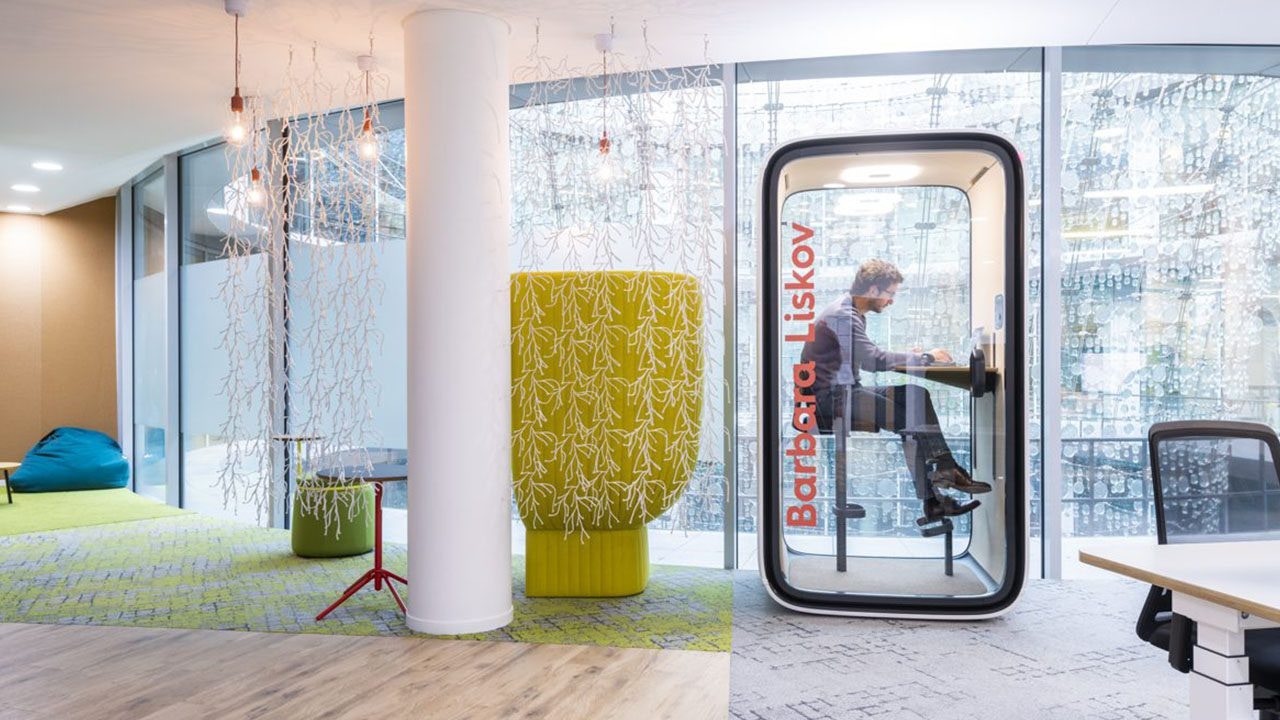
Furniture and Decor Solutions
Incorporating furniture and decor elements that contribute to noise reduction can significantly improve your office’s acoustic environment. Consider the following solutions when designing your workplace:
Modular workstations
These flexible workspaces offer privacy and noise control while adapting to changing needs. Utilising modular workstations with integrated acoustic panels or partitions can help create barriers between employees, reducing noise transfer.
Acoustic screens and partitions
Freestanding or desk-mounted acoustic screens can help create separation between workspaces, reducing noise transfer and providing a sense of privacy. Partitions made of sound-absorbing materials can be an effective solution for open-plan offices.
Sound-absorbing furniture
Soft surfaces such as upholstered chairs, sofas, or even ottomans can absorb sound, reducing noise levels in an office. Additionally, incorporating sound-absorbing storage units or cabinets can help minimise reverberation.
Carpets and rugs
Thick carpets or area rugs can help absorb sound and reduce impact noise from foot traffic. Choose materials with good sound absorption properties, such as plush carpeting or rugs with thick padding.
Acoustic artwork and wall hangings
Decorative elements, such as acoustic artwork or wall hangings, can contribute to noise reduction while adding aesthetic appeal to your office. These can include fabric-wrapped panels or artwork with built-in acoustic properties.
By integrating these furniture and decor solutions into your office design, you can effectively reduce noise levels, creating a more comfortable, focused, and productive work environment for your employees.
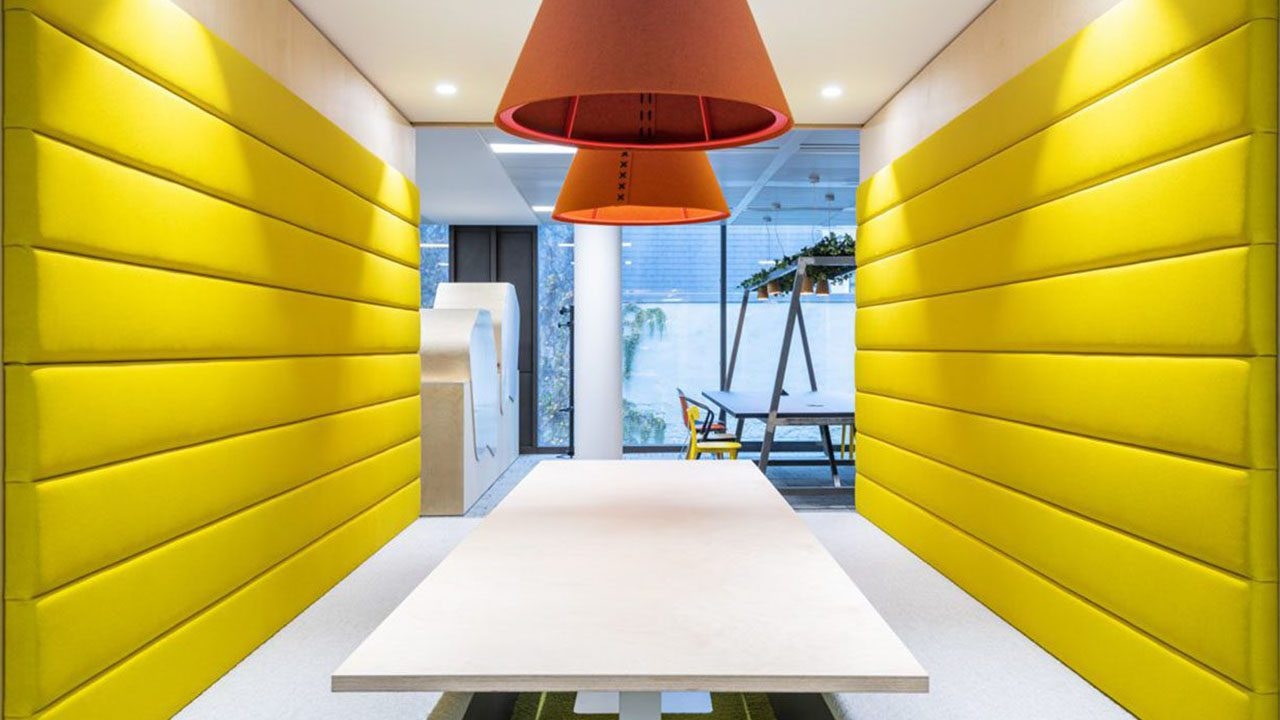
Open Office Plan Strategies
Open office plans, while promoting collaboration and flexibility, can often exacerbate noise issues. To mitigate noise problems in open offices, consider implementing the following strategies:
- Zoning and space management: Divide the office into designated areas for specific activities, such as collaboration zones, focused work areas, and break spaces. Separating noisy activities from quieter ones can help reduce distractions for employees.
- Incorporating quiet zones: Create designated quiet zones within the open office layout. These areas should be free from distractions and noise, offering employees a place to work in peace when they need to concentrate.
- Acoustic partitions and screens: Install movable acoustic partitions or screens to create temporary barriers between workspaces, providing privacy and noise reduction when needed.
- Ceiling treatments: Suspended acoustic panels, baffles, or clouds can help absorb sound in open office spaces, reducing reverberation and improving the overall acoustic environment.
- Noise masking systems: Consider using sound masking technology, such as white noise or ambient sound systems, to subtly raise the background noise level, making speech and other sounds less distracting.
By incorporating these open office plan strategies, you can create a more acoustically comfortable environment for employees, balancing collaboration and focus while maintaining an open and adaptable workspace.
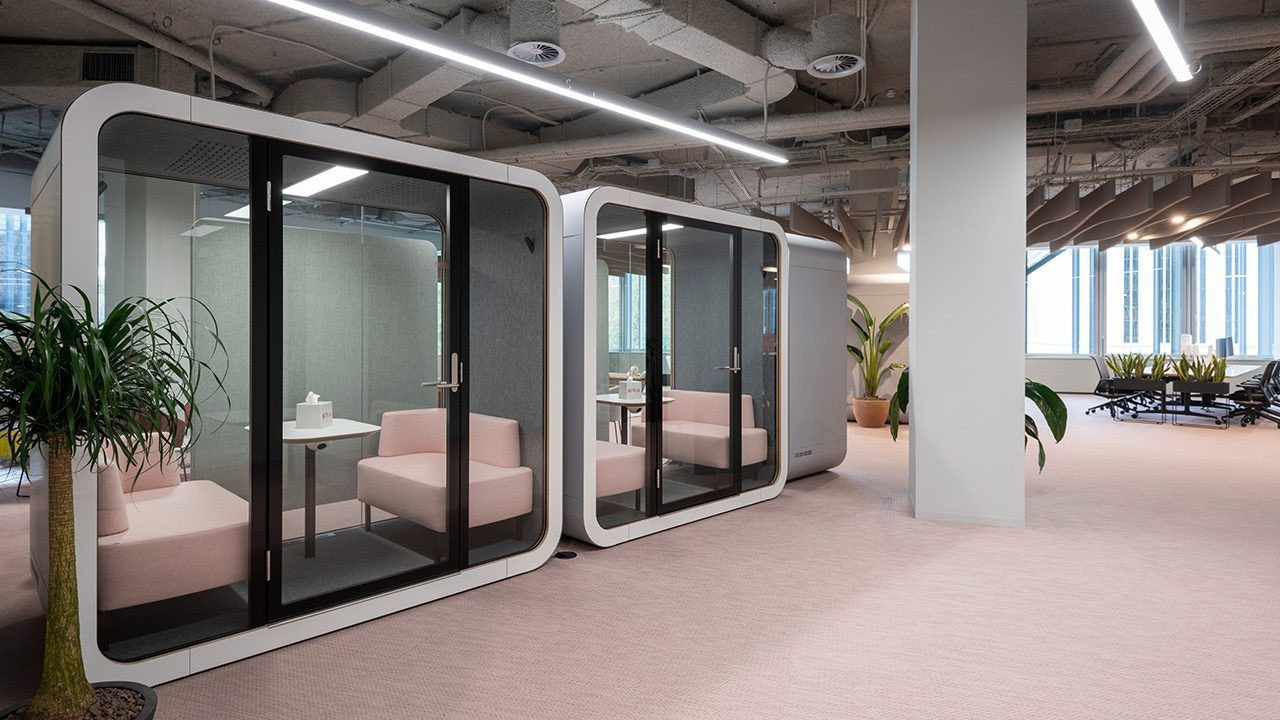
Concluding Thoughts
We’ve discussed how effectively reducing noise levels in your office is essential for promoting productivity and employee well-being. By incorporating acoustic design principles, selecting appropriate noise-reducing materials, and implementing suitable furniture and decor solutions, you can create a comfortable and efficient workplace. Additionally, adopting open office plan strategies and fostering a quiet office culture through noise policies can further enhance your work environment, leading to happier, more focused employees and a thriving business.
Additional Reading
Baden-Powell, C. (2008). Architect’s Pocket Book (3rd ed.). Architectural Press
FAQs on Office Noise Reduction
1. HOW CAN I MEASURE NOISE LEVELS IN MY OFFICE?
To measure noise levels in your office, you can use a sound level meter or a decibel meter. These devices measure sound pressure levels in decibels (dB) and provide a quantitative assessment of the noise levels in your workspace. Alternatively, you can use smartphone apps designed for measuring sound levels, though they may not be as accurate as professional equipment.
2. WHAT ARE SOME COST-EFFECTIVE NOISE REDUCTION SOLUTIONS FOR SMALL BUSINESSES?
For small businesses on a budget, there are several cost-effective noise reduction solutions:
- Adding rugs, carpets, or floor mats to absorb sound and reduce impact noise
- Installing weatherstripping or door sweeps on doors to block sound leakage
- Using bookshelves, cabinets, or plants as natural sound barriers
- Encouraging employees to use headphones when listening to music or engaging in virtual meetings
- Implementing simple noise policies, such as designating quiet hours or specific noisy areas
3. HOW CAN I MAKE MY EXISTING OFFICE SPACE MORE SOUNDPROOF?
To make your existing office space more soundproof, consider the following:
- Installing acoustic panels, baffles, or ceiling clouds to absorb sound and reduce reverberation
- Upgrading to soundproof doors and windows or applying window film to reduce noise transmission
- Adding weatherstripping or door sweeps to doors to seal gaps and prevent sound leakage
- Rearranging furniture or adding partitions to create barriers between workspaces
- Encouraging employees to follow noise etiquette and policies
4. ARE THERE SPECIFIC UK REGULATIONS REGARDING NOISE LEVELS IN OFFICES?
In the UK, the Health and Safety Executive (HSE) provides guidelines on workplace noise levels to ensure employees’ health and safety. The Control of Noise at Work Regulations 2005 sets exposure limits for daily and weekly noise levels, with the daily noise exposure limit set at 87 dB and the peak sound pressure at 140 dB. Employers are responsible for assessing and controlling noise risks in the workplace, providing hearing protection, and offering regular hearing checks for employees exposed to high noise levels.